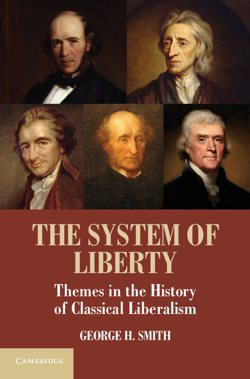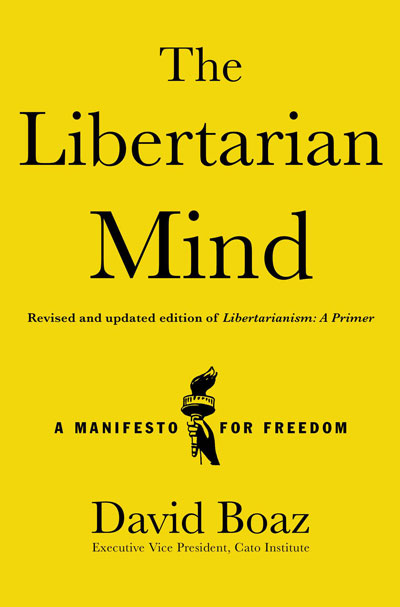A Libertarian Moment in Turkey?
What are the protesters in Istanbul upset about? Well, I noted last week that a survey by a Turkish newspaper gave us a partial picture. A headline from the Hurriyet Daily News in Istanbul reported:
Protesters are young, libertarian and furious at Turkish PM, says survey
An online survey of 3000 protesters conducted by two academics found, among other things:
A majority of the protesters who completed the survey, 81.2 percent, defined themselves as “libertarian.” A total of 64.5 percent of the respondents defined themselves as “secular.”
And now the Washington Post tells us that one young protester, Aysun Yerlikaya, objects to Prime Minister Recep Tayyip Erdogan because he’s, well, too much like Michelle Obama and Michael Bloomberg:
Erdogan “pokes into everything — what you drink, what you eat,” she said, referring to advice he gave earlier this year to eat “genuine wheat bread” with a lot of bran in it.
Posted on June 15, 2013 Posted to Cato@Liberty
The Federal Government’s “Rural” Industrial Complex
David Fahrenthold has another excellent article on waste in government in Sunday’s Washington Post. This time he finds a truly comic example of waste, duplication, and confusion:
[T]he U.S. government has at least 15 official definitions of the word “rural,” two of which apply only to Puerto Rico and parts of Hawaii.
All of these definitions matter; they’re used by various agencies to parcel out $37 billion-plus in federal money for “rural development.” And each one is different….
There are 11 definitions of “rural” in use within the U.S. Department of Agriculture alone.
It’s laughable. But the real question is, Why does the federal government even need to define “rural”? Well, of course the answer comes back to the real purpose of our modern tax-and-transfer state: The definitions define who gets the subsidies.
Every year, there are billions available to fund projects in rural communities. Money for housing. Community centers. Sewer plants. Broadband connections.
In a sidebar to the story, we get some details. The Census Bureau has one definition of “rural” so it can tell us how many Americans live in rural areas. Here are the purposes of the other 14 definitions:
Used for a variety of loan and grant programs, all meant to foster rural development…for loans and grants for “community facilities” in rural areas… for aid for water and waste-disposal systems… for aid for improvements in telecommunications systems…by farm-credit associations making housing loans… for certain lending programs for rural community development…to determine areas served by Office of Rural Health…by the National Rural Development Partnership…for grants to rural institutions of higher education…to determine what areas of Hawaii are eligible for rural-aid programs…to determine what areas of Puerto Rico are eligible for rural-aid programs…by various rural development loan and grant programs.
So let’s see. People in rural areas pay federal taxes. People in urban areas pay federal taxes. All that money goes to Washington – where a great deal of it stays – and then some of it is used to provide programs and services in rural and urban areas. Maybe both rural and urban Americans would be better off keeping their money at home and paying for whatever services they think are actually worth the cost. And then the federal government wouldn’t have to pay handsome salaries to well-educated people to form task forces to determine 15 different definitions of “rural.” And states, cities, and rural areas wouldn’t have to hire expensive lobbyists to get a piece of that federal pie.
Posted on June 10, 2013 Posted to Cato@Liberty
San Francisco’s Self-Inflicted Housing Problem
Housing is expensive and hard to find in beautiful San Francisco. In today’s New York Times, one would-be housing provider explains why. Scott James writes:
[A]fter renting out a one-bedroom apartment in my home for several years, I will never do it again. San Francisco’s anti-landlord housing laws and political climate make it untenable….
[A] complex legal structure has been created to make evictions for just cause extraordinarily difficult.
At first many of these rules governed only apartment complexes and larger properties with many units. But in 1994 the city applied the regulations to homes if they included just one rental on the property. In other cities, including New York City, such small-time landlords have far more rights over their own homes.
As he goes on to describe his experience with the last tenant in his downstairs apartment—a story featuring a sledgehammer, a flooded apartment, and a plugged-in appliance in an overflowing sink—I was reminded of the 1990 movie Pacific Heights, not coincidentally set in San Francisco.
It’s a thriller that is almost a documentary on the horrors of landlord-tenant law—and that is confirmed by today’s story. A young couple buys a big house in San Francisco and rents an apartment to a young man. He never pays them, and they can’t get him out, and then things get really scary. The lawyer lectures the couple—and the audience—on how “of course you’re right, but you’ll never win.” When I saw it, I just knew this happened to someone—maybe the screenwriter or someone he knew. Sure enough, when Cato published William Tucker’s book Rent Control, Zoning, and Affordable Housing, and I asked Pacific Heights director John Schlesinger for a jacket blurb, he readily agreed to say, “If you thought Pacific Heights was fiction, you need to read this book”; and he told me that the screenwriter had a relative who had gone through a tenant nightmare.
Want to instantly create 10,600 rental units in San Francisco? Reform landlord-tenant law so that small landlords come back to the market. In the meantime, watch Pacific Heights.
Posted on June 7, 2013 Posted to Cato@Liberty
NSA Spying on a Gazillion Americans
Today’s widespread outrage over reports that the National Security Agency is conducting widespread, untargeted, domestic surveillance on millions of Americans reminds me of this post from July 2012, in which Sen. Rand Paul reported on a private briefing he’d received. He couldn’t reveal what he’d learned, but he was able to report that the number of Americans subject to surveillance was closer to “a gazillion” than to zero. Now we have a bit more information. As I wrote then:
Sen. Rand Paul (R-KY) gave a great speech on surveillance last week at FreedomFest. Actually, he gave two good speeches, but the one embedded below is his short 6-minute talk at the Saturday night banquet. He talks about our slide toward state intrusion into our phone calls, our emails, our reading habits and so on. You know how big the surveillance state has gotten? The answer is “a gazillion.” Watch the speech—complete with high-falutin’ references to Fahrenheit 451 and the martyr Hugh Latimer!
Posted on June 6, 2013 Posted to Cato@Liberty
The Kids Are All Right
Is libertarianism a worldwide trend among young people? There are poll reports from the United States, Great Britain, and Turkey this week that point in that direction.
The College Republican National Committee put out a report finding that young voters are very much against excessive government spending (though they do support higher taxes on the wealthy) and are strongly in favor of gay marriage. They want to reform entitlements but see the Republican party as “closed-minded, racist, rigid, old-fashioned.”
Meanwhile, the Economist, in an editorial titled “The strange rebirth of liberal England” (in an allusion to a famous history book), writes, “Young Britons have turned strikingly liberal, in a classical sense….The young want Leviathan to butt out of their pay cheques as well as their bedrooms.” An accompanying article declares, “Britain’s youth are not just more liberal than their elders. They are also more liberal than any previous generation”:
Young Britons are classical liberals: as well as prizing social freedom, they believe in low taxes, limited welfare and personal responsibility. In America they would be called libertarians.
More than two-thirds of people born before 1939 consider the welfare state “one of Britain’s proudest achievements”. Less than one-third of those born after 1979 say the same. According to [the long-running British Social Attitudes survey], members of Generation Y are not just half as likely as older people to consider it the state’s responsibility to cover the costs of residential care in old age. They are also more likely to take such a hard-hearted view than were members of the famously jaded Generation X (born between 1966 and 1979) at the same stage of life.
“Every successive generation is less collectivist than the last,” says Ben Page of Ipsos MORI, a pollster.
And finally comes this headline from the Hurriyet Daily News in Istanbul:
Protesters are young, libertarian and furious at Turkish PM, says survey
An online survey of 3000 protesters conducted by two academics found, among other things:
A majority of the protesters who completed the survey, 81.2 percent, defined themselves as “libertarian.” A total of 64.5 percent of the respondents defined themselves as “secular.”
Maybe this really is the libertarian moment. Students for Liberty attracted 1,400 attendees to its February national conference, and another 365 to a European conference in March. Now, as the Economist says, if only the young people will vote – and the parties will offer them candidates.
Posted on June 6, 2013 Posted to Cato@Liberty
George Smith’s Long-Awaited Book: The System of Liberty
 George H. Smith is one of the best-read, most insightful libertarians living today. He is the author of most of the Cato University Home Study Course, which you should definitely download. He writes a weekly article for Libertarianism.org titled “Excursions into the History of Libertarian Thought.” He is the author of Atheism: The Case Against God (1974), Atheism, Ayn Rand, and Other Heresies (1991), and audio series on “Great Political Thinkers,” “The Meaning of the U.S. Constitution,” and “The Ideas of Liberty.” And finally – finally – he has been persuaded to write down much of what he knows about the history of classical liberal thought in a new book from the Cato Institute and the Cambridge University Press, The System of Liberty: Themes in the History of Classical Liberalism.
George H. Smith is one of the best-read, most insightful libertarians living today. He is the author of most of the Cato University Home Study Course, which you should definitely download. He writes a weekly article for Libertarianism.org titled “Excursions into the History of Libertarian Thought.” He is the author of Atheism: The Case Against God (1974), Atheism, Ayn Rand, and Other Heresies (1991), and audio series on “Great Political Thinkers,” “The Meaning of the U.S. Constitution,” and “The Ideas of Liberty.” And finally – finally – he has been persuaded to write down much of what he knows about the history of classical liberal thought in a new book from the Cato Institute and the Cambridge University Press, The System of Liberty: Themes in the History of Classical Liberalism.
It’s a great study of classical liberalism and the relations among such liberal ideas as individualism, natural rights, utilitarianism, self-sovereignty, and what Lord Acton called “the polar star of liberty.” Along the way he answers such criticisms of liberalism as “atomistic individualism” and “social Darwinism.” It’s a college course in political philosophy in just 217 very readable pages. Buy it now for the low low price of $24.95.
Posted on June 3, 2013 Posted to Cato@Liberty



